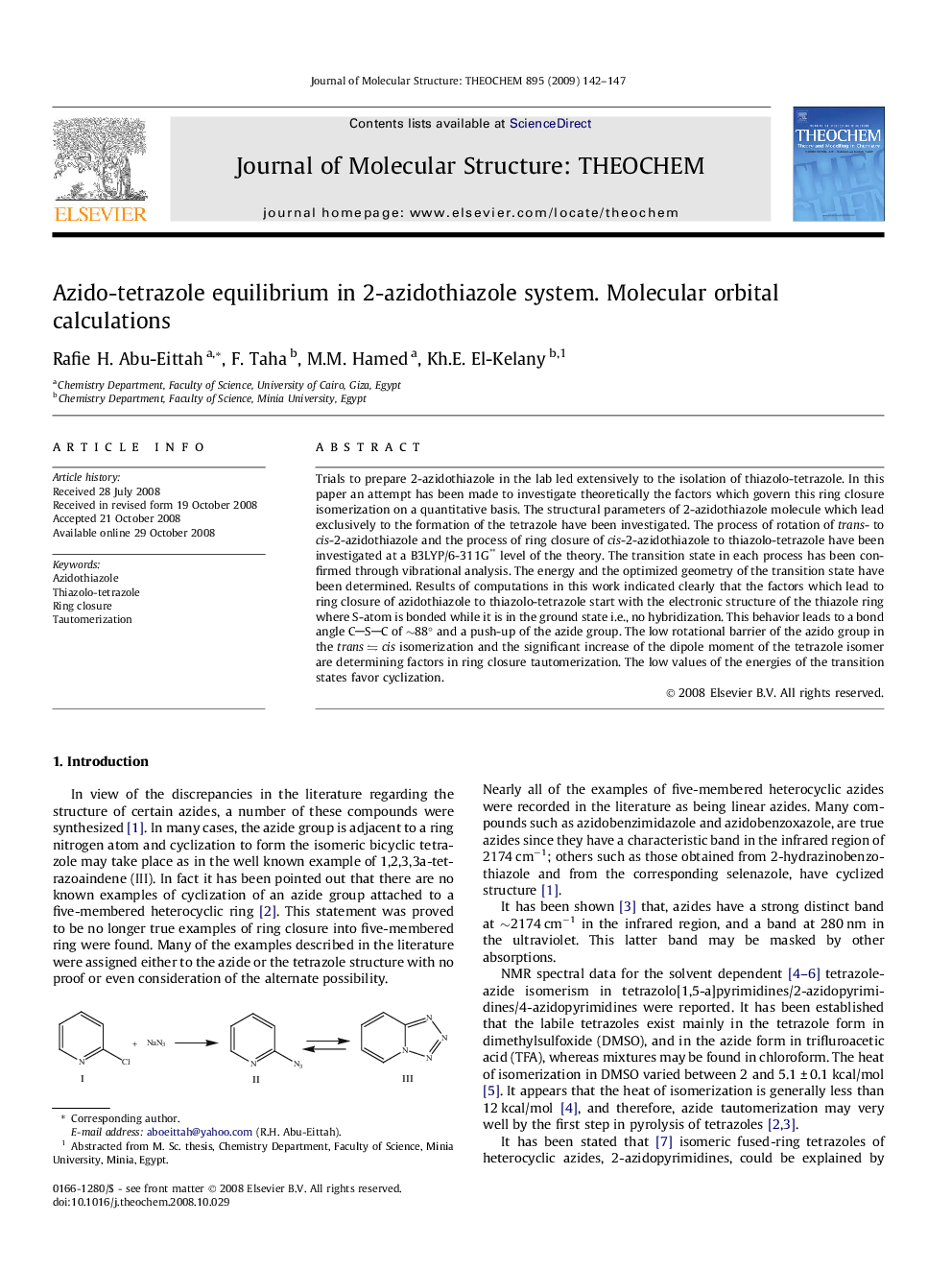| Article ID | Journal | Published Year | Pages | File Type |
|---|---|---|---|---|
| 5417666 | Journal of Molecular Structure: THEOCHEM | 2009 | 6 Pages |
Abstract
Trials to prepare 2-azidothiazole in the lab led extensively to the isolation of thiazolo-tetrazole. In this paper an attempt has been made to investigate theoretically the factors which govern this ring closure isomerization on a quantitative basis. The structural parameters of 2-azidothiazole molecule which lead exclusively to the formation of the tetrazole have been investigated. The process of rotation of trans- to cis-2-azidothiazole and the process of ring closure of cis-2-azidothiazole to thiazolo-tetrazole have been investigated at a B3LYP/6-311Gââ level of the theory. The transition state in each process has been confirmed through vibrational analysis. The energy and the optimized geometry of the transition state have been determined. Results of computations in this work indicated clearly that the factors which lead to ring closure of azidothiazole to thiazolo-tetrazole start with the electronic structure of the thiazole ring where S-atom is bonded while it is in the ground state i.e., no hybridization. This behavior leads to a bond angle CSC of â¼88° and a push-up of the azide group. The low rotational barrier of the azido group in the transâcis isomerization and the significant increase of the dipole moment of the tetrazole isomer are determining factors in ring closure tautomerization. The low values of the energies of the transition states favor cyclization.
Keywords
Related Topics
Physical Sciences and Engineering
Chemistry
Physical and Theoretical Chemistry
Authors
Rafie H. Abu-Eittah, F. Taha, M.M. Hamed, Kh.E. El-Kelany,
